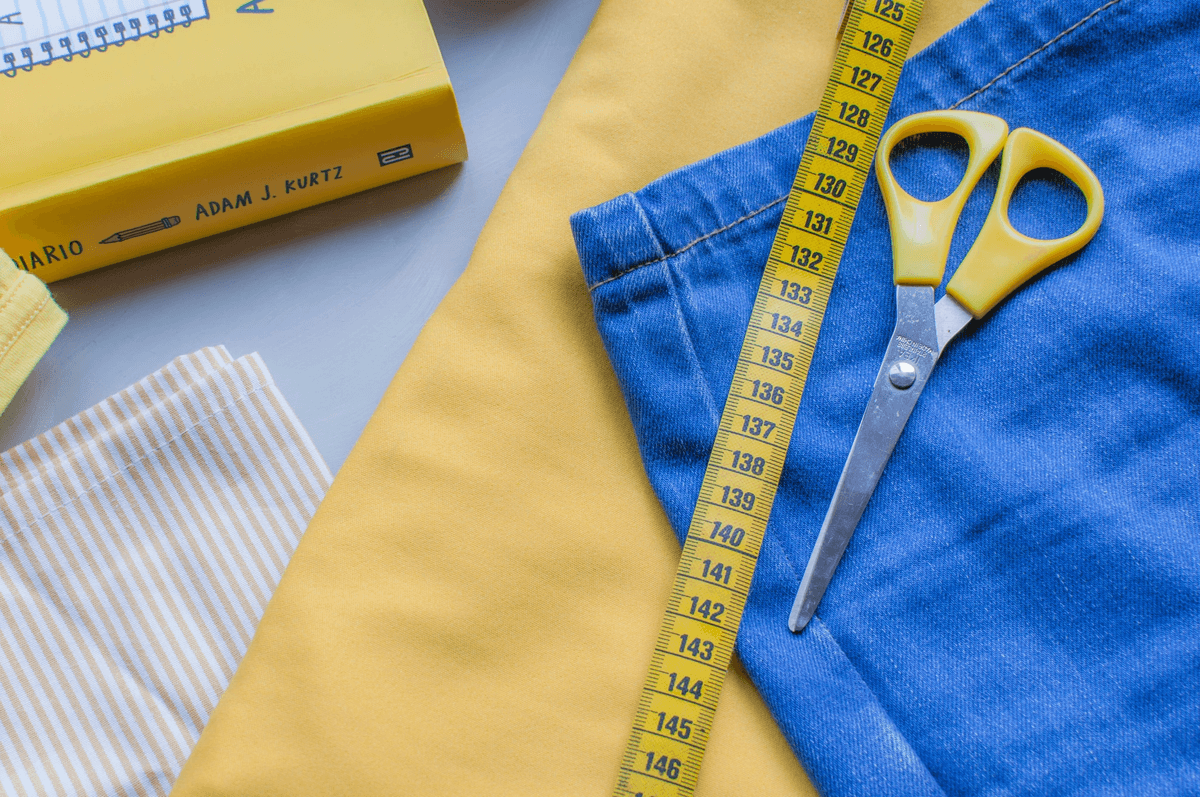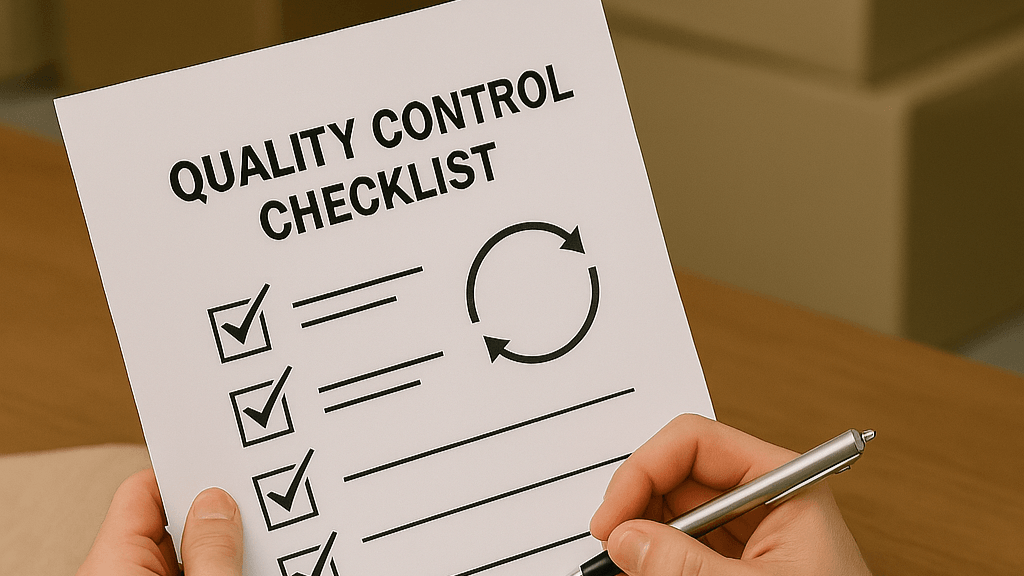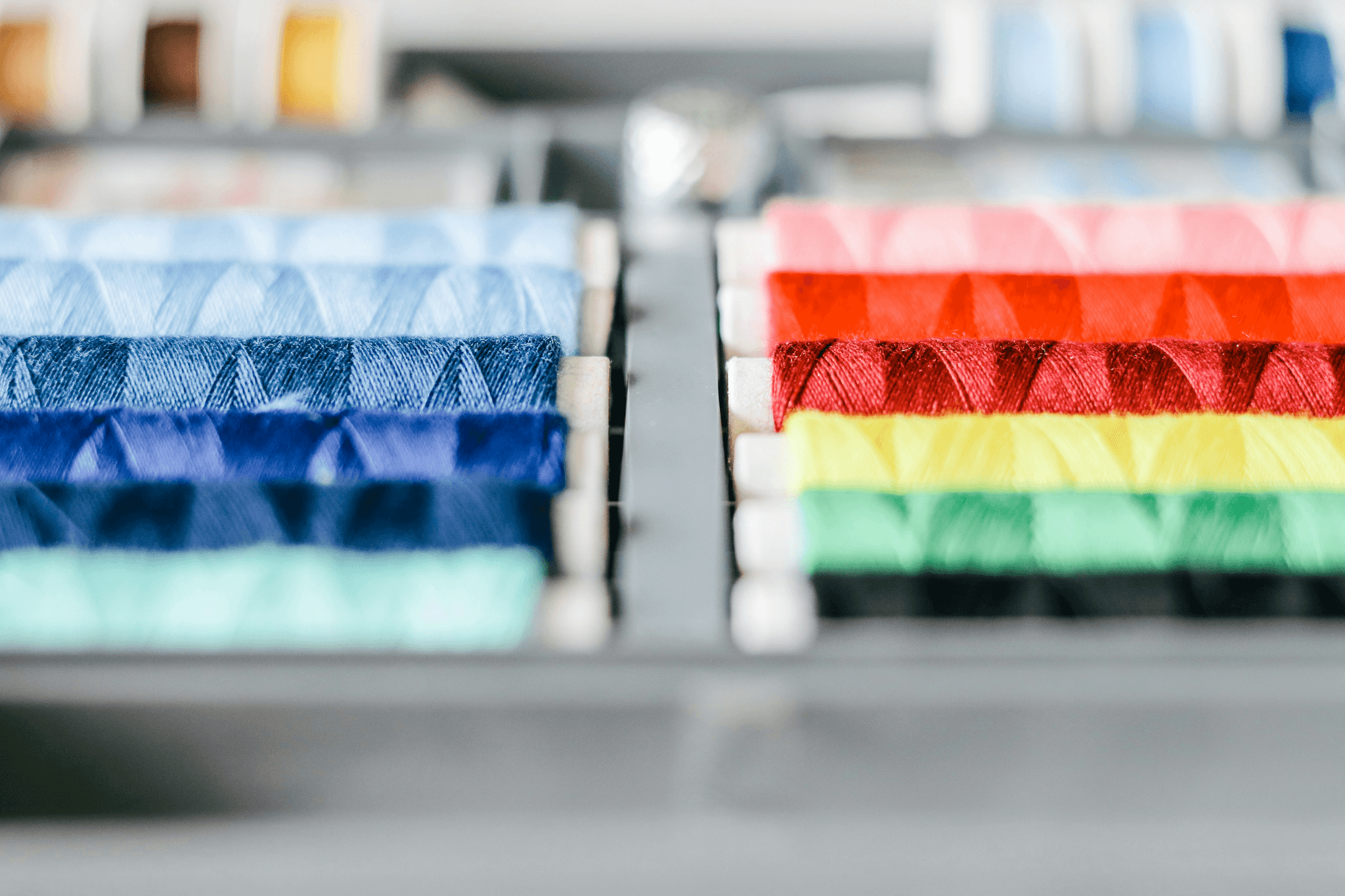Introduction

In the ever-evolving world of fashion and textiles, ensuring quality is paramount. Textile inspection plays a crucial role in maintaining standards, identifying defects, and satisfying customer expectations. By implementing effective textile inspection processes, manufacturers can significantly reduce the risk of delivering subpar products to the market.
Understanding the Importance of Textile Inspection
Textile inspection serves as a gatekeeper for quality control, allowing businesses to catch common quality defects before they reach consumers. Common quality defects identified in textile inspection include appearance defects, seams and stitching irregularities, and color and dye issues that can compromise a product's integrity. By prioritizing textile inspection, companies not only enhance their reputation but also foster customer loyalty through consistent product quality.
Key Challenges in Quality Control
Despite its importance, managing quality control in textiles comes with challenges that can hinder effectiveness. One major hurdle is adhering to the various standards used in textile inspections across different regions and markets. Additionally, understanding sampling plans and AQL (Acceptable Quality Level) for textile pre-shipment inspections can be complex yet critical for minimizing risks associated with defective goods.
Overview of the Inspection Process
The textile inspection process typically involves multiple stages designed to evaluate fabric quality at different points in production. It begins with pre-shipment inspections to ensure compliance with specifications before shipping out products. Following this are in-line inspections during production and final random inspections post-production; each step is vital for catching potential issues early on while ensuring adherence to established standards used in textile inspections.
What is Textile Inspection?

Textile inspection is a critical process in the textile industry that ensures the quality and consistency of fabrics before they reach consumers. It involves a systematic examination of textiles to identify any defects or deviations from specified standards. By understanding what textile inspection entails, manufacturers can enhance product quality, minimize waste, and build trust with customers.
Definition and Purpose
At its core, textile inspection refers to the evaluation of fabric quality through various methods and techniques aimed at identifying flaws that could impact performance or aesthetics. The primary purpose of textile inspection is to ensure that products meet specific criteria set by both manufacturers and consumers, thus safeguarding brand reputation. This process helps in detecting common quality defects identified in textile inspections, such as appearance defects, seams and stitching irregularities, as well as color and dye issues.
Types of Textile Inspection
There are several types of textile inspections designed to address different stages of production and varying needs within the industry. Pre-production inspections focus on raw materials before manufacturing begins, while in-line inspections occur during production to catch issues early on. Final random inspections take place once production is complete but before shipping, ensuring that everything adheres to established standards used in textile inspections.
Benefits of Conducting Inspections
Conducting thorough inspections offers numerous benefits that extend beyond mere compliance with regulations; it enhances overall product quality significantly. By identifying common quality defects early—such as seams and stitching irregularities—manufacturers can make timely corrections without incurring higher costs later on. Moreover, implementing a robust sampling plan and AQL for textile pre-shipment inspections can lead to reduced returns from customers due to dissatisfaction with color and dye issues or other fabric imperfections.
The Textile Inspection Process

The textile inspection process is a critical component in ensuring the quality and reliability of fabric products. This process involves several key stages, each designed to identify potential issues before they escalate into major problems. By implementing a systematic approach to inspections, manufacturers can significantly reduce the risk of defects and enhance overall product quality.
Pre-Production Inspections
Pre-production inspections are conducted before manufacturing begins, serving as a foundational step in the textile inspection process. During this stage, inspectors assess raw materials against established standards used in textile inspections to ensure they meet quality requirements. Common quality defects identified in textile inspection at this stage include color inconsistencies, fabric strength issues, and any Appearance Defects that could affect the final product.
Additionally, these inspections often involve reviewing production plans and sampling plans based on Acceptable Quality Levels (AQL) for textile pre-shipment inspections. By establishing clear criteria early on, manufacturers can avoid costly mistakes later in the production cycle. Ultimately, pre-production inspections set the tone for successful manufacturing by catching potential problems before they arise.
In-Line Inspections
In-line inspections occur during the manufacturing process and play a vital role in maintaining quality control throughout production. Inspectors monitor various aspects of the textiles being produced, including seams and stitching irregularities that can compromise durability and appearance. By identifying issues like uneven stitching or misaligned patterns early on, manufacturers can make necessary adjustments without significant delays.
This stage also focuses on color and dye issues that may arise during production runs. Regular checks ensure that colors remain consistent with specifications while minimizing waste from rejected batches due to mismatched hues or fading dyes. In-line inspections not only help maintain high-quality standards but also contribute to efficient production timelines by addressing defects promptly.
Final Random Inspections
Final random inspections are conducted once production is complete but before shipment occurs; these checks serve as the last line of defense against quality defects slipping through the cracks. Inspectors randomly select samples from finished goods to evaluate them against predefined criteria established during earlier phases of textile inspection processes. This includes assessing overall appearance, verifying seam integrity, and ensuring compliance with industry standards.
During this stage, common quality defects such as Appearance Defects or discrepancies in fabric specifications are scrutinized closely to prevent subpar products from reaching customers' hands. Utilizing a well-structured sampling plan based on AQL guidelines ensures that inspectors gather representative samples for thorough evaluation without overburdening resources or causing delays in shipping schedules. As such, final random inspections play an essential role in safeguarding brand reputation while enhancing consumer trust through consistent product excellence.
Essential Quality Control Practices

Quality control in the textile industry is not just a box to check; it’s a vital part of ensuring that products meet customer expectations and industry standards. Effective practices in textile inspection can significantly reduce the chances of defects slipping through, which, as we know, can lead to costly returns and damage to brand reputation. Let’s explore some essential quality control practices that every textile inspector should master.
Identifying Defects in Textiles
Identifying defects during textile inspection is crucial for maintaining high-quality standards. Common quality defects identified in textile inspections include appearance defects like stains or uneven dyeing, seams and stitching irregularities such as skipped stitches or misaligned seams, and color and dye issues that may not match the approved samples. By implementing a robust sampling plan and AQL (Acceptable Quality Level) for textile pre-shipment inspections, inspectors can systematically evaluate fabric quality before it reaches consumers.
To effectively identify these defects, inspectors must be trained to recognize subtle variations that could indicate larger problems down the line. This attention to detail not only helps catch flaws early but also builds trust with clients who rely on consistent quality from their suppliers. In short, keen eyes make for better textiles!
Measuring Fabric Specifications
Measuring fabric specifications accurately is another cornerstone of effective textile inspection. Specifications such as weight, width, and thread count are essential indicators of fabric quality that should align with agreed-upon standards used in textile inspections. When these measurements are off, it can result in garments that don’t fit well or don’t perform as expected.
Using precise measuring tools ensures consistency across batches of textiles while providing quantifiable data for future reference. This practice aids manufacturers in understanding their production capabilities and helps buyers make informed decisions about their purchases based on tangible metrics rather than guesswork alone. In essence, proper measurement translates into fewer surprises when products hit store shelves!
Compliance with Industry Standards
Compliance with industry standards is non-negotiable when it comes to successful textile inspection processes. These standards serve as benchmarks for safety, environmental impact, and overall product performance—ensuring that textiles meet both legal requirements and consumer expectations alike. Regular audits against these standards help identify areas for improvement within manufacturing processes.
Moreover, adherence to established guidelines fosters greater transparency between manufacturers and clients while enhancing brand credibility within the marketplace. As consumers become increasingly conscious of ethical sourcing and sustainability practices, compliance will play an even more critical role in shaping purchasing decisions moving forward. Ultimately, aligning with industry standards isn’t just good practice; it’s good business!
Developing a Quality Control Checklist

Creating a quality control checklist is essential for ensuring that textile products meet the required standards before they reach consumers. A well-structured checklist not only helps in identifying common quality defects but also streamlines the inspection process, making it more efficient. This section will explore the key elements of an effective checklist, how to customize it for different fabrics, and the tools that can enhance your textile inspection efforts.
Key Elements of an Effective Checklist
An effective quality control checklist should include several key components to ensure thorough textile inspection. First, it must encompass all critical aspects of textiles, such as appearance defects, seams and stitching irregularities, and color and dye issues. Additionally, incorporating industry standards used in textile inspections will provide a robust framework for evaluating product quality.
Another crucial element is the inclusion of specific criteria for each defect type. For instance, when assessing seams and stitching irregularities, detail what constitutes acceptable stitching patterns and tension levels. Lastly, make sure to implement a sampling plan and Acceptable Quality Level (AQL) for textile pre-shipment inspections to quantify acceptable defect rates effectively.
Customizing Your Checklist for Different Fabrics
Not all fabrics are created equal; hence customizing your checklist based on fabric type is vital in textile inspection. Different materials may exhibit unique qualities or vulnerabilities that require tailored assessment criteria—what works for cotton may not apply to silk or synthetic fibers. Therefore, understanding the characteristics of each fabric type will enable you to create specific checkpoints relevant to their properties.
For example, while inspecting denim might involve checking for color consistency and durability under stress, silk inspections should focus more on appearance defects like snags or pulls due to its delicate nature. This level of customization ensures that you address potential issues effectively while adhering to industry standards used in textile inspections across various materials.
Tools for Effective Inspection
To conduct thorough textile inspections efficiently, utilizing appropriate tools is essential. From magnifying glasses that help spot minute appearance defects to advanced fabric testing machines that measure tensile strength or colorfastness—having the right equipment can significantly enhance your ability to detect common quality defects identified in textile inspection processes.
Additionally, digital tools can streamline documentation and reporting during inspections by allowing inspectors to record findings on mobile devices or tablets easily. These technologies can automate data collection related to seams and stitching irregularities or color discrepancies while providing real-time access to historical data for continuous improvement purposes.
In summary, developing a comprehensive quality control checklist tailored specifically for different fabrics involves understanding key elements such as defect types and industry standards used in textile inspections while leveraging effective tools enhances overall efficiency during the process.
Choosing the Right Inspection Partner

Selecting the right inspection partner is crucial for maintaining high standards in textile quality control. The right partner can help you navigate through the complexities of textile inspection, ensuring that common quality defects identified in textile inspections are caught before they reach your customers. With a multitude of companies offering inspection services, understanding what to look for can make all the difference.
Why Partner with China Inspection Pro
When it comes to textile inspection, partnering with a reputable company like China Inspection Pro can significantly enhance your quality assurance processes. This organization specializes in identifying common quality defects such as appearance defects, seams and stitching irregularities, and color and dye issues. Their expertise ensures compliance with industry standards used in textile inspections, helping you maintain a competitive edge.
China Inspection Pro also offers tailored solutions that cater specifically to your needs, whether you're dealing with pre-production inspections or final random inspections. Their extensive knowledge of sampling plans and AQL (Acceptable Quality Level) for textile pre-shipment inspections allows them to effectively evaluate fabric quality before shipment. By choosing this partner, you’re not just investing in an inspection service; you’re securing peace of mind for your business.
Evaluating Inspection Companies
Evaluating potential inspection companies is essential for finding one that aligns with your specific needs and expectations regarding textile inspection. Start by assessing their experience and expertise in handling various types of textiles; this will give you insights into their ability to identify common quality defects effectively. Look for customer testimonials or case studies that highlight their success rates in detecting issues like seams and stitching irregularities or color and dye problems.
Another critical factor is whether the company adheres to established standards used in textile inspections; this speaks volumes about their commitment to quality control practices. Ensure they utilize comprehensive checklists during inspections, covering everything from appearance defects to compliance with industry regulations. Finally, consider how responsive they are during initial communications—an open line of communication can be invaluable when addressing urgent concerns.
Understanding the Cost-Benefit Analysis
Understanding the cost-benefit analysis when selecting an inspection partner is vital for making informed decisions about your investment in textile inspection services. While it may be tempting to choose a cheaper option, remember that cutting corners often leads to increased costs down the line due to returns or damaged reputations from poor-quality products reaching consumers. Investing in a reliable partner who specializes in identifying common quality defects will ultimately save you money by reducing these risks.
Additionally, consider how effective sampling plans and AQL for textile pre-shipment inspections can minimize waste associated with defective goods while maximizing overall product integrity. The benefits gained from catching issues like appearance defects or dye inconsistencies before shipment far outweigh potential savings from opting for lower-quality services initially. In essence, partnering with a reputable inspection company pays dividends—not just financially but also through enhanced trustworthiness within global trade networks.
Conclusion
In the world of textiles, ensuring product quality is paramount. Through rigorous Textile Inspection processes, businesses can significantly enhance the quality of their products, leading to greater customer satisfaction and reduced returns. By identifying Common Quality Defects Identified in Textile Inspection—such as appearance defects and seams and stitching irregularities—manufacturers can address issues before they reach the consumer.
Enhancing Product Quality Through Inspection
Textile Inspection plays a crucial role in maintaining high standards within the industry. Regular inspections help detect Color and Dye Issues early on, allowing manufacturers to rectify problems that could tarnish their reputation. With a solid understanding of Standards Used in Textile Inspections, companies can ensure compliance with industry expectations while consistently delivering superior products.
Building Trust in Global Trade
In an increasingly interconnected world, trust is essential for successful global trade relationships. By implementing robust Textile Inspection protocols, companies demonstrate their commitment to quality and reliability, fostering confidence among buyers and suppliers alike. This trust becomes particularly important during processes like Textile Pre-Shipment Inspections, where transparency about product quality can make or break a deal.
Future Trends in Textile Quality Control
The future of textile quality control is evolving rapidly with advancements in technology and inspection methodologies. Emerging trends focus on more efficient Sampling plans and AQL for Textile Pre-Shipment Inspections that allow for quicker turnaround times without sacrificing accuracy. As the industry continues to innovate, we can expect even more sophisticated approaches to identifying issues like seams and stitching irregularities or color discrepancies.
